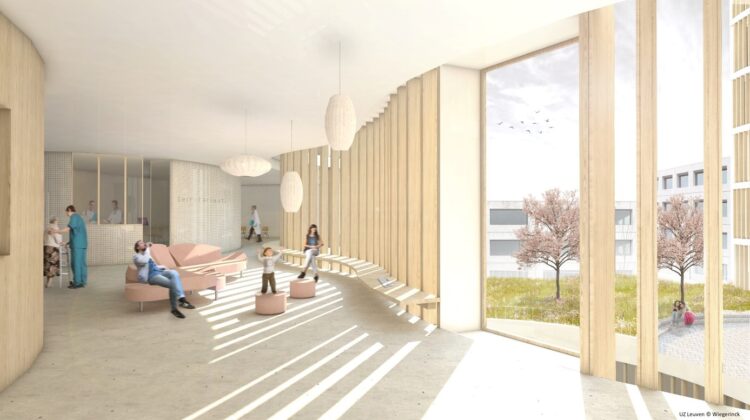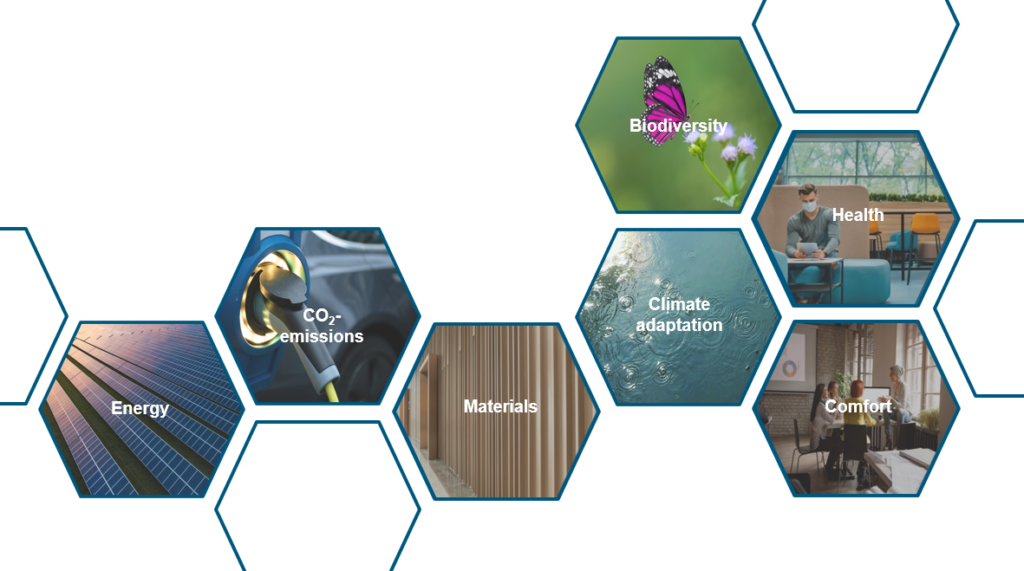
Visiting or staying in a hospital is an exciting experience for most people. In this environment, stimuli are perceived that can influence the situation in both a positive and negative way. Various studies have shown that noise levels in hospitals are too high for optimal healing. This blog is about how healing environments can contribute to the health of patients.
By Hester Thoen, MSc, Consultant Acoustics & Building Physics, Fitwel Ambassador
Sustainable care
To achieve the goals of the Climate Agreement, the Netherlands is making large-scale efforts toward sustainability. As one of the major consumers, our healthcare real estate also takes part in this approach. In the ‘Green Deal Sustainable care for a healthy future’ agreements have been made to reduce environmental pollution and CO2 emissions in the healthcare sector [1].
Previously focusing on scaling up and modernization, there is now an additional ambition for energy efficiency. The importance of other themes, such as circularity, health, and biodiversity, is also increasing but is not always part of the design process yet.

Healing environments
The term “healing environments” already originated in the 18th century, when the first hospital was designed that used the natural environment as part of the treatment. Traditionally, the healing environment design has been based on practical experience and philosophical considerations, rather than scientific evidence. This changed in 1984 when a study by Roger Ulrich [2] provided the first scientific evidence of the health effects of healing environments. Nowadays, it is a theme that is used by default in the design of the hospital environment. However, it is not always clear what healing environments exactly mean and what the requirements are to create one.
Healing environments focus on stimulating well-being and reducing stress. The indoor environment concerns nature, daylight, fresh air, and ambient sound, which all affect the perception of a building. Since our hearing is the one sense that is never turned off, sound is one of the most important aspects of healing environments. In addition to perceiving sound, sounds can also lead to physical and mental complaints. The degree of nuisance depends on acoustical and non-acoustical factors, such as the predictability and controllability of the sound and personal factors.
our hearing is never turned off, sound is one of the most important aspects of healing environments
Effects on patients
Research shows that patients heal faster and use fewer medicines when they stay in an acoustically comfortable environment. This is explained by the fact that stress has negative consequences on the recovery and course of diseases. Besides that, substances in our body that promote recovery and healing are produced during sleep. Noise levels that disrupt sleep should therefore be avoided as much as possible [3].
The target group of the care environment itself also requires increased room acoustic quality. They need to deal with the fact of reduced hearing sensitivity of older people. Speech intelligibility, therefore, has a major effect on this group. Research indicates that there is a direct relationship between hearing impairment and social exclusion since older people often struggle to partake in conversations and entertainment [4].

Challenges to acoustic quality
Healthcare institutions have a special acoustical environment that distinguishes them from other indoor environments. Due to the hygiene requirements, the materialization often differs from what is preferable for acoustics: hard, cleanable materials instead of soft, sound-absorptive materials. In addition, there is a mix of work and rest zones within a short distance of each other, which makes good acoustics even more important [5].
In a building design, it is important to support the functionality of the building. For healthcare facilities, this means that patients have to be monitored well: alarm systems must be audible and the visibility of the patients is important (hence open doors). Good intelligibility in conversations between caregiver and patient is also essential to prevent patients from withholding information and prevent mistakes in diagnosis or medication. This also counts for staff among each other, that is discussing patients or working together in the operating room. On the other hand, confidentiality plays a role: conversations must remain private. Hence sound transmission should be limited.
To realize comfortable acoustics, in the design process attention is needed to both the layout and the interior of healthcare institutions. It is important to take into account the different target groups and organizational structures. For example, a young patient has very different needs than an older patient and that also applies to patients who stay for a longer or shorter period. To understand these needs, it is important to involve the specialist early in the design process, where there is room for ambitions and proper acoustic measures.

Opportunities for Healing environments
Although the indoor environment is such an important theme in patient recovery, little attention is paid to it in building regulations. The Dutch Building Decree (Bouwbesluit) contains only a few basic rules about noise from outside, ventilation, and daylight. In recent years, additional initiatives have been developed aimed at the indoor environment of offices (PvE Gezonde kantoren) and schools (PvE Frisse scholen). A good starting point for continuing this development in other environments, such as healthcare!
Now that the renovation of healthcare real estate is taking place in the context of sustainability. This provides a win-win opportunity to include measures that stimulate healing environments for patients. People’s health should also be a permanent part of sustainable design since it concerns the (future) provision of our basic needs. Let’s put the patient at the center of every design requirement so that healthcare facilities not only contribute medically to healing but also from within their building.
Resources
[1] Duurzame zorg voor gezonde toekomst. Green Deals. [Online] 19 08 2022. https://www.greendeals.nl/green-deals/duurzame-zorg-voor-gezonde-toekomst
[2] Ulrich RS. Viewing through a window may influence recovery from surgery. Science. 1984 Apr 27;224(4647):420-1.
[3] Meer aandacht voor slapen in het ziekenhuis. Nursing. [Online] 3 maart 2014. [Citaat van: 14 juli 2011.]
[4] Takaki Ogawa et al., Hearing-impaired elderly people have smaller social networks: A population-based aging study, Archives of Gerontology and Geriatrics, Volume 83, 2019, Pages 75-80, ISSN 0167-4943, https://doi.org/10.1016/j.archger.2019.03.004.
[5] Thoen, H. Akoestiek in de gezondheidszorg, afstudeerrapport, Hogeschool Rotterdam, 16 juni 2014.
Further reading:
Healing environment in Amersfoort
A healing environment for violent offenders

